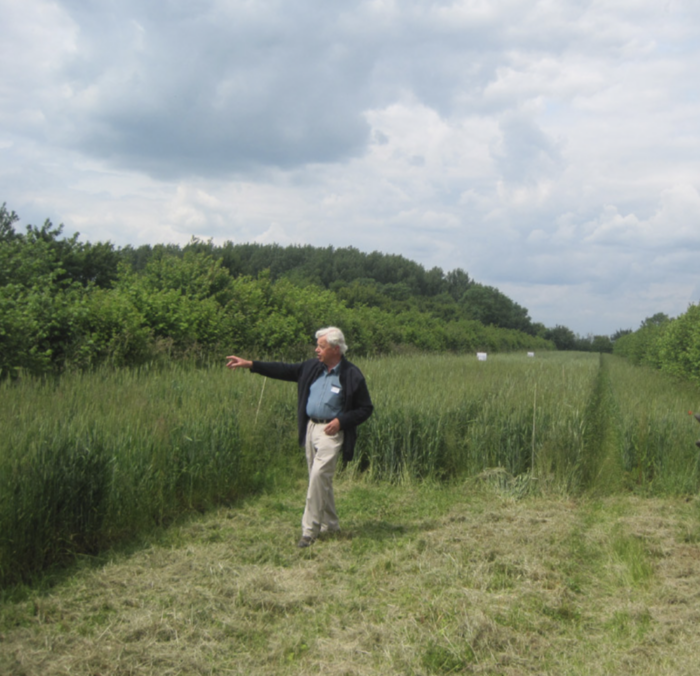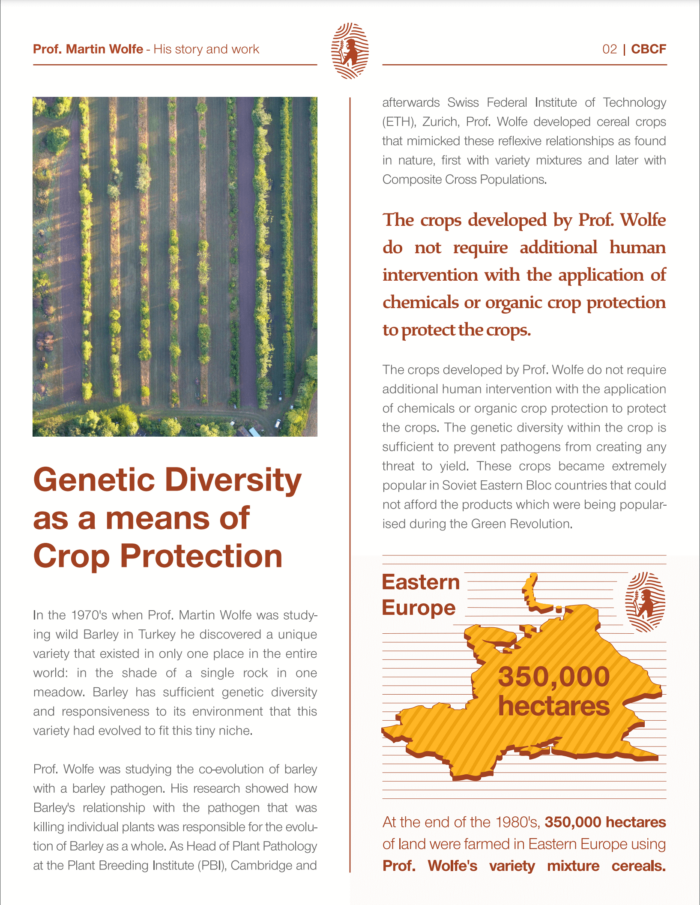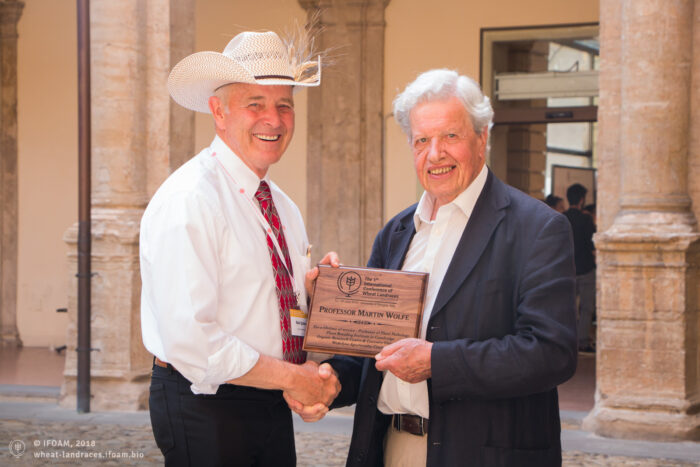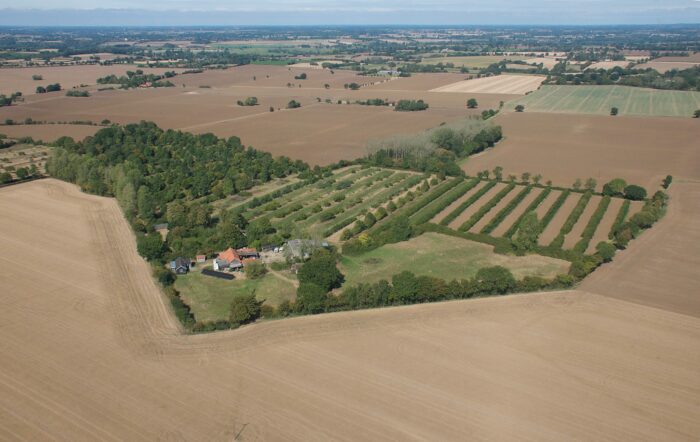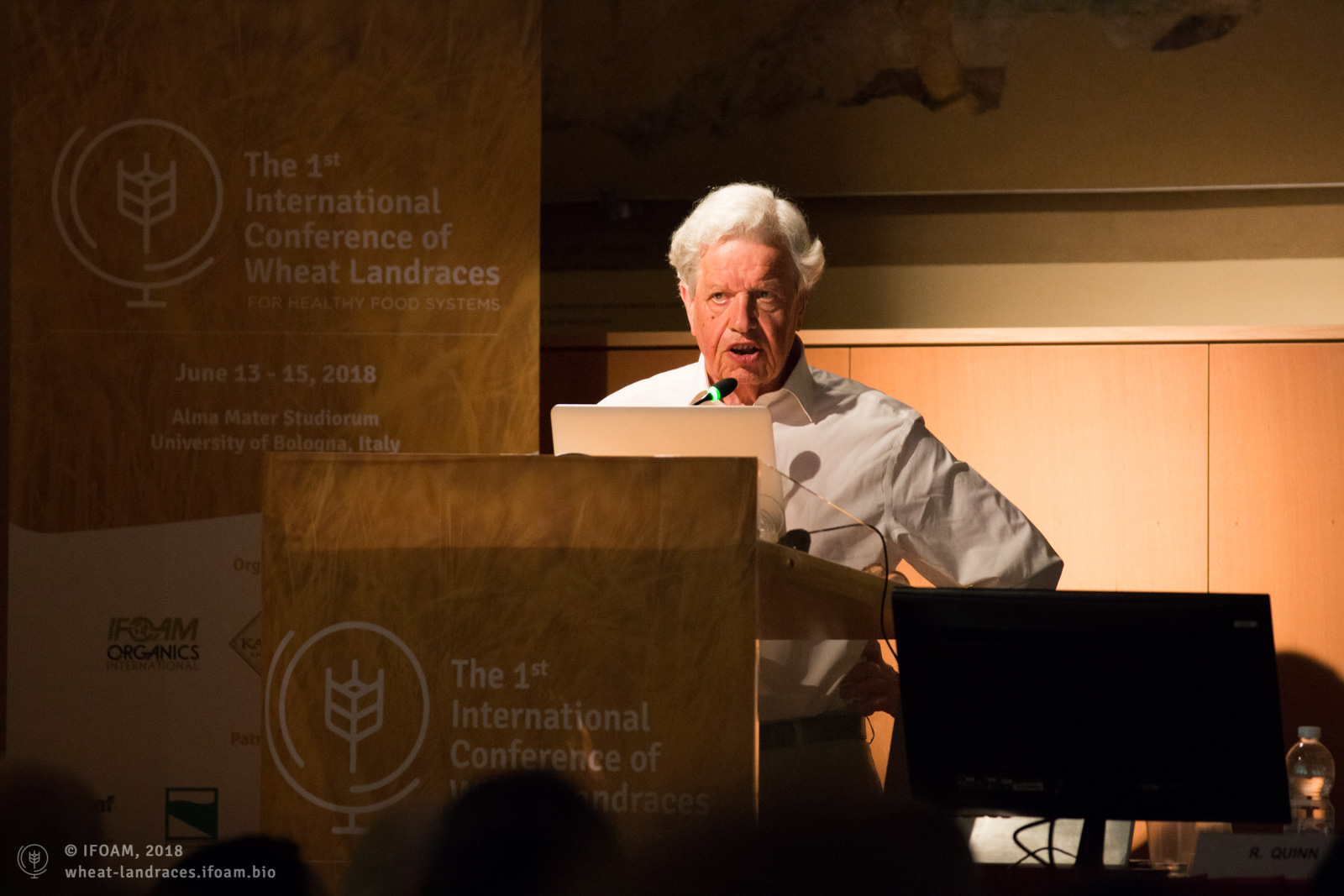
Prof. Martin Wolfe
Home Prof. Martin Wolfe
Intra-crop Genetic Diversity as a means of Crop Protection
In the 1970’s when Prof. Martin Wolfe was studying wild Barley in Turkey he discovered a unique variety that existed in only one place in the entire world: in the shade of a single rock in one meadow. Barley has sufficient genetic diversity and responsiveness to its environment that this variety had evolved to fit this tiny niche.
Prof. Wolfe was studying the co-evolution of barley with a barley pathogen. His research showed how Barley’s relationship with the pathogen that was killing individual plants was responsible for the evolution of Barley as a whole. As Head of Plant Pathology of the Plant Breeding Institute (PBI), Cambridge and afterwards Swiss Federal Institute of Technology (ETH), Zurich, Prof. Wolfe developed cereal crops that mimicked these reflexive relationships as found in nature, first with variety mixtures and later with Composite Cross Populations.
The crops developed by Prof. Wolfe do not require additional human intervention with the application of chemicals or input organic crop protection to protect the crops. The genetic diversity within the crop is sufficient to prevent pathogens from creating any threat to yield. The variety mixtures developed by Prof. Wolfe became extremely popular in Soviet Eastern Bloc countries that could not afford the products which were being popularised during the Green Revolution.
Prof. Wolfe’s research showed how Barley’s relationship with a pathogen was responsible for the evolution of Barley as a whole.
At the end of the 1980’s, 350,000 hectares of land were farmed in Eastern Europe using Prof. Wolfe’s variety mixture cereals. These crops were also farmed in Pakistan, Bangladesh and elsewhere. At the fall of the Berlin Wall, farms from west of Berlin bought huge swathes of land and converted them to the farming systems they were already using which had arisen from the Green Revolution. The farms using Prof. Wolfe’s cereals fell from 350,000 to 20,000 hectares in a year.
In the 1990’s Prof Wolfe and his team at John Innes Centre further developed genetically diverse cereal crops to more closely mimic their natural disease resistance and evolution in nature. They crossed 21 varieties of wheat, 10 known for their high quality and 10 known for being high yielding and 1 known for both, Bezostia. Every one of these 21 varieties was crossed with every other to create a super-genepool. Sown together as a single crop, they were then allowed to evolve naturally in the field, with seed being saved after harvest and sowed the following year with no human selection.
At the end of the 1980’s, 350,000 hectares of land were farmed in Eastern Europe using Prof. Wolfe’s variety mixture cereals.
This wheat is called YQ, and requires no crop protection to be used in the farming of the crop. Its genetic diversity makes it extremely resilient to changes in climate and shocks to the growing environment and it evolves to suit the specific environmental conditions on the farm where it is grown. The genetic diversity also contributes positively to the nutrient profile of the crop. It supports the lives of insects, fungi and soil organisms that are often compromised by the application chemical crop protection. These organisms go on to feed larger organisms, mammals and birds and support a web of life beyond the farms where it is grown, as well as feeding human beings.
This wheat is now used by bakers such as E5 Bakehouse and Small Food Bakery who won the BBC Good Food Award in 2018.
In 2018 Prof. Martin Wolfe was given a lifetime achievement award at the IFOAM 1st International Conference on Wheat Landraces in Bologna.
Martin developed cereal crops that mimicked these reflexive relationships as found in nature.
Pioneering Agroforestry
In the 1990’s Prof. Wolfe purchased an arable farm in Suffolk, to convert into an agroforestry research site. This site, Wakelyns Agroforesty, became one of two key sites for the Organic Research Centre (ORC) and Prof. Wolfe became the Principle Scientific Advisor to ORC.
There he developed 4 silvo-arable agroforestry systems. Each system had a different focus – one for timber, one for fruit, and two with Short Rotation Coppice energy crops. All systems took the formation of alley cropping: a north-south orientation for rows of trees with a croppable area between at a distance calculated to support efficient use of farm machinery.
A six year rotation was developed:
- Year 1 – cereals
- Year 2 & 3 – high nutrient ley
- Year 4 – legume
- Year 5 & 6 – high nutrient ley
The high nutrient ley is composed of lucerne, chicory, 2 types of white clover, 2 types of red clover, Birds Foot Trefoil and Black Medic. It is ideal for use as grazing and pastured poultry were farmed at Wakelyns during the ley period.
This ley created enough nutrients that no input fertiliser was needed, neither chemical nor organic. Using this ley for pasture can ensure that in such a system there is effectively no fallow period and yet the soil is getting replenished with soil structure improving and topsoil and nutrient availability increasing over time.
With no application of input fertiliser, nor any input crop protection or herbicide necessary, soil preparation, seeding and harvesting are the main activities during the year.
Within these agroforestry systems the Cross Composite Populations mentioned above were included to form the cereal component of the arable rotation. The agroforestry systems Prof. Wolfe developed at Wakleyns require extremely low maintenance. With no application of input fertiliser, nor any input crop protection or herbicide necessary, soil preparation, seeding and harvesting are the main activities during the year.
The trees serve as a windbreak while mediating temperature extremes and mitigating against both flood and drought. They thus have a positive interaction with the crops and growth of pasture during the ley period. The Short Rotation Coppice (SRC) energy crops from the Willow and Hazel systems proved to be up to 100% more productive than the same crops in a monoculture. They provided yields of 5tn per hectare per annum of woody biomass, oven dried weight. This SRC wood can have a variety of uses such as biocharr, wooden boards or be gasified with extremely low emissions and used to create electricity and heat which can be used on farm or sold for an additional source of revenue.
The Short Rotation Coppice energy crops proved to be up to 100% more productive than the same crops in a monoculture.
Martin’s wife Anne was extremely active in building a vibrant and far-reaching community connected to Wakelyns and brought many other farming and food related enterprises and individuals to work with Wakelyns, creating enterprises and adding value from the diverse crops and niche’s produced by the system.
Wakelyns became a beacon of the success of Agroforestry. The EU Agroforestry program AGFORWARD regularly hosted meetings at Wakleyns, and it was also associated with the European Forestry Initiative’s AFINET program. Farmers, academics, bakers, plant breeders and many other interested parties flocked to Wakleyns from around the UK, the EU and around the world to see in person the transformational potential of Agroforestry.
Martin Wolfe passed on the 10.03.2019 and is buried at Wakleyns next to Anne Wolfe, under a tree close to their house
Martin considered visiting in-person to be very important, and encouraged people to come and witness the biodiversity of the farm. Wakekyns continues to do this today now that the farm has been taken forward and progressed to the next stage by Prof. Wolfe’s sons David and Toby.
Prof. Wolfe’s cereal crops do not require any input crop protection, the genetic diversity is sufficient.
Biodiversity from Farm Productivity

